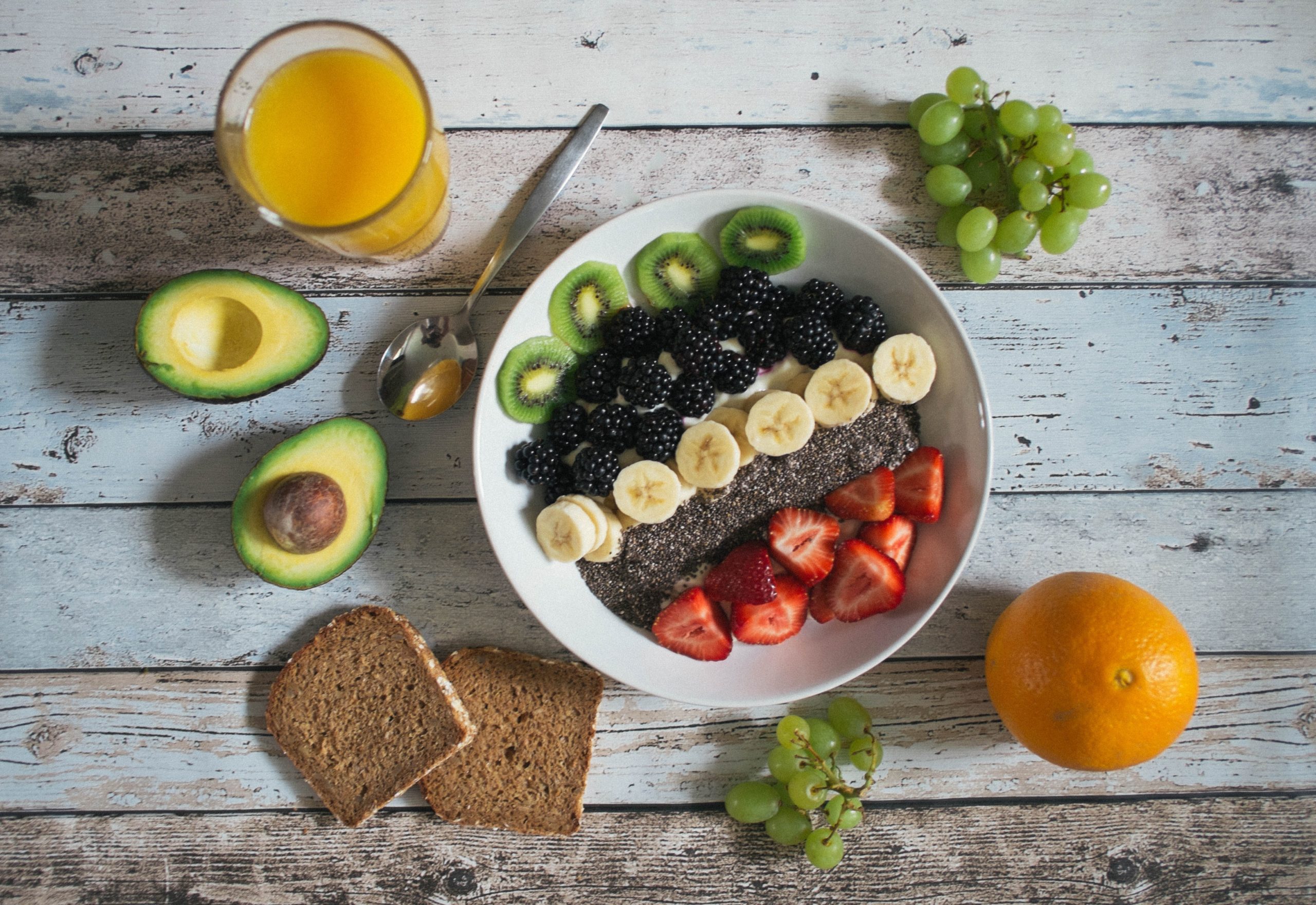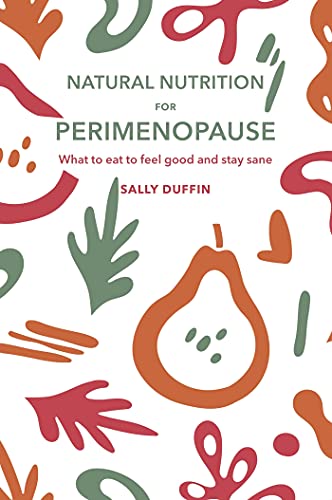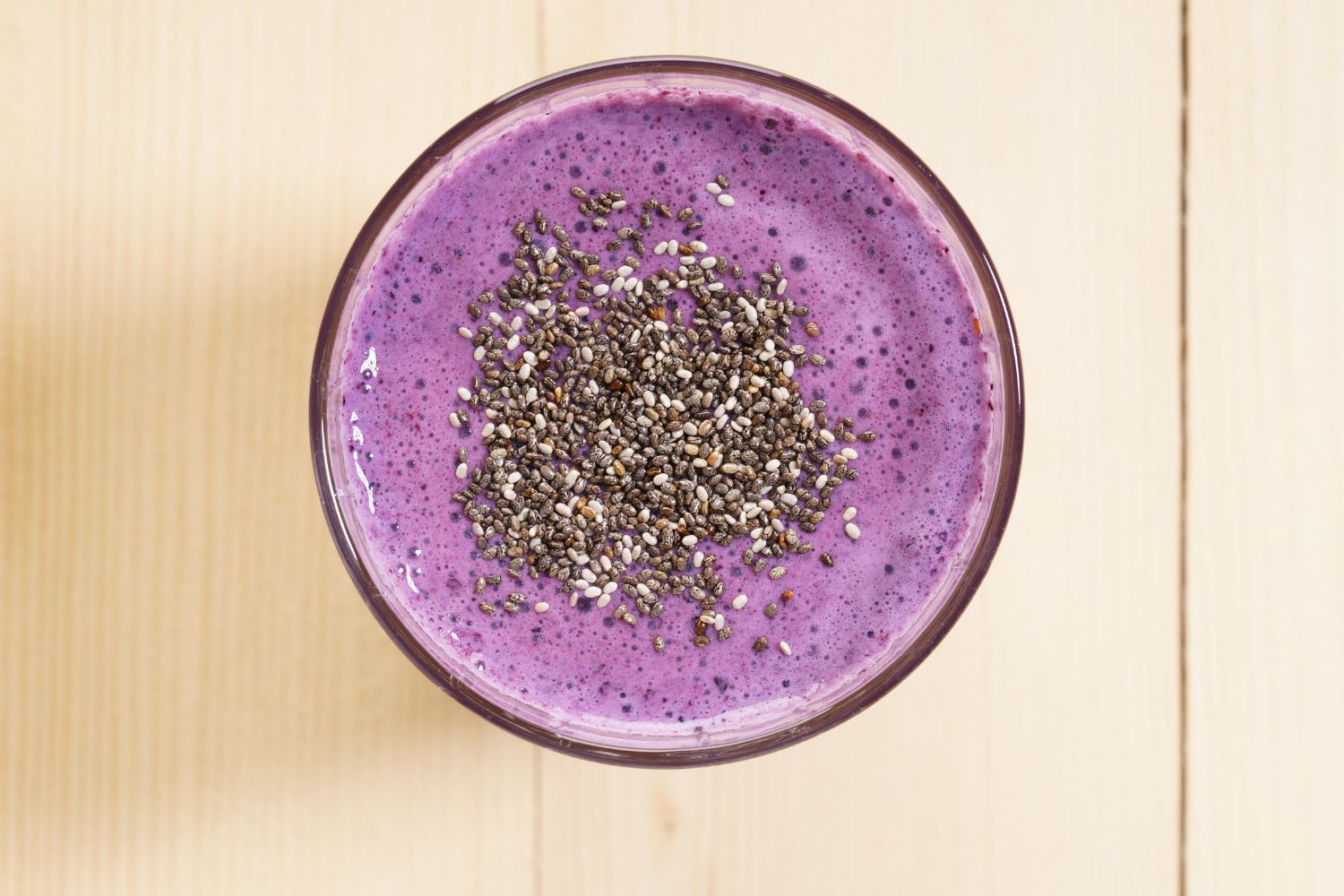
Natural Nutrition for Perimenopause: What to eat to feel good and stay sane
This is an excerpt from Natural Nutrition for Perimenopause: What to eat to feel good and stay sane by Sally Duffin.
Chapter 3: Blood Sugar Balance
As you’ve probably grasped by now, there’s some hot dance moves happening between all our hormones every day during perimenopause. And if one dancer is out of step, it causes a knock-on effect on the rest of the dance floor.
It’s easy to add to the dance floor chaos by skipping meals, not eating enough, relying on sugary foods and caffeine to get through the day, and using alcohol to wind down at night. We’re not designed to handle uppers and downers all the time; humans function best on steady fuel and natural daily rhythms.
Relying on refined sugary foods and stimulants causes spikes of insulin – our blood sugar-balancing hormone – and cortisol, one of our main stress hormones. In turn, these two have knock-on effects on estrogen and thyroid hormones. Fluctuating blood sugar levels affect our dancing hormones and can trigger many perimenopausal symptoms, including hot flushes, anxiety, weight gain, and forgetfulness.
Let’s start with carbohydrates and their effects on blood sugar levels. All types of carbohydrate (bread, potatoes, pasta, rice, etc.) are eventually broken down into simple sugar molecules. These sugars flow through the bloodstream and are ushered into cells by the hormone insulin. Once inside cells, the sugars are used to produce energy (proteins and fats are also used in energy pathways but we’re just focusing on carbs here).
If we eat three meals a day composed of protein, fat, and complex carbohydrates (wholefood carbs rather than processed refined foodstuffs), a normal pattern of blood sugar levels looks something like this:
It’s a gentle pattern with smooth undulations, and the normal rise-and-fall of blood sugars linked to hunger, eating, and the slow release of sugars from complex carbs.
If we ping-pong through the day on caffeine and refined sugary foods like white bread, cakes, biscuits, sweets, and fruit juices, the pattern looks more like this:
Sharp peaks and deep troughs triggered by rushes of sugar and overworked insulin.
These peaks and troughs can trigger all manner of symptoms including headaches, hot flushes, jittery shakes, irritability, mood swings, and nausea.
As if this wasn’t enough, these ups and downs can also encourage belly fat.
Every time blood sugar drops too low, we put ourselves into a state of stress, forcing the body to release cortisol, our stress management hormone. Cortisol enables us to tap into stores of glucose in the liver and muscles and bring our blood sugar levels back up a bit. This process is a quick short-term way of managing the occasional bout of low blood sugar. Long term though, ongoing stimulation of cortisol encourages weight gain around the belly area. This is a protective mechanism: if we can’t rely on regular fuel, we need to store some energy supplies (i.e., fat) near the important organs. So, the key point to remember here is that erratic blood sugar levels = stress = belly fat.
Another problem with running on highs and lows of blood sugar is that, eventually, cells start to ignore insulin and it can no longer transport sugar into the cells quite so efficiently. Once this happens, you’re on the path to insulin resistance and the early stages of Type II diabetes. Estrogen affords us some protection from insulin resistance because of the way it supports the activity of glucose transporters in cell membranes (these are carriers that aid the movement of glucose into cells), but once estrogen levels start to decline, we are at much greater risk of developing insulin resistance. Unfortunately, both belly fat and insulin resistance contribute towards general inflammation and the risk of developing cardiovascular disease, so it really is vital to get a handle on blood sugar balance now to help prevent problems developing later.
How to support blood sugar balance
- Eat a balanced breakfast within two hours of waking.
- Avoid (or minimize as much as possible) refined processed carbohydrates: white bread, white pasta, cakes, biscuits, sweets, added sugar, fruit juices.
- Sit down to eat, take three slow deep breaths before your first mouthful, and focus on what you are eating. Chew each mouthful thoroughly until it’s mushy and soft. By eating mindfully, you are allowing your body to focus on digestion and the signals coming from your stomach that tell your brain when you’re full. Eating on the run overrides these signals, leading to indigestion, bloating, wind, and overeating.
- Eat sustaining meals with a gap of roughly four hours in between each one.
- Avoid snacking unless there is a gap of more than 4–5 hours between meals. Snacking and grazing triggers constant insulin release and can interfere with digestion.
- Eat all your meals within a 12-hour time window (e.g., breakfast at 7.30am, last meal of the day finished by 7.30pm) to give your body a 12-hour overnight fast. Short fasts like this have been shown to support metabolic function and weight balance and aid digestion.
- If you’re having alcohol (and remember, it’s a common trigger for hot flushes), drink it with a meal to help slow down the release of sugars into your system.
- At each meal, think about portion sizes on your plate: there’s more detailed information and a diagram about this in Chapter 8 – The Essential Elements in Every Meal.
The general guidelines are:
- Cover half of your plate with brightly colored vegetables and salad leaves
- Cover a quarter with good quality protein sources – eggs, meat, fish, nuts, seeds, pulses, legumes
- And the last quarter is for complex carbohydrates in the form of root veggies and wholegrains
- Include healthy fats too:
- Drizzle extra virgin olive oil over cooked veggies and salads
- Make dressings from flax oil, apple cider vinegar and lemon juice
- Cook using coconut oil, ghee, or organic free-range butter
- Fruit is delicious and healthy, but best limited to three servings per day maximum. It is easy to fill up on fruit at the expense of eating vegetables which are way more nutrient dense.
- If you need a snack opt for something unprocessed that combines protein with slow-releasing sugars:
- Hummus & oatcakes
- Vegetable crudités & avocado dip
- Hardboiled egg with tomato salsa dip
- Handful of nuts & seeds and a serving of fresh fruit
- Small pot of full-fat live yogurt (or dairy-free equivalent) with berries
- Handful of homemade trail mix: shredded coconut, almonds, cashews, raisins, dried apricot, and pumpkin seed
- Homemade smoothie: blend together one small banana, one dessertspoon of nut butter, a generous handful of baby spinach and 250ml of milk or dairy-free milk.
A quick note about dairy
If you are eating dairy products like milk, cheese, cream, yoghurt, and butter, they count towards the protein sources. However, dairy products are all slightly different in terms of nutritional value and the effect they have in the body once digested. Live yoghurt, for example, contains beneficial bacteria that support digestion and immunity and it is higher in protein and lower in lactose (milk sugar) compared to regular milk.
Cow’s milk (along with wheat, egg, and soy) is a common allergen and food intolerance/sensitivity. There’s a distinct and vital difference between an allergy and an intolerance or sensitivity: an allergy means the immune system is responding aggressively to a protein or proteins in a certain food and the reaction can be life-threatening. Total avoidance of the food trigger is the only safe course of action. An intolerance or sensitivity can cause uncomfortable and distressing symptoms, but these are not life-threatening and the reaction doesn’t always involve the immune system. Lactose intolerance, for example, is caused by a lack of lactase, the digestive enzyme that breaks down lactose in the small intestine. When there isn’t enough lactase available, the milk sugar carries on through the gut, causing wind, cramps, bloating and diarrhea.
Interestingly, there are many anecdotal reports from women who say reducing and even avoiding dairy during perimenopause eased their hot flashes. Why this is we’re not entirely certain, though a possible theory is that a low-grade inflammatory response to certain proteins in cow’s milk may trigger histamine release which in turn can trigger flushing.
If you suspect cow’s milk may be causing problems, try a simple elimination test. Avoid all cow’s milk products (milk, cream, yoghurt, butter, ice cream, whey, cheese) for at least a month and keep a note of any changes to your symptoms.
If things improve, try slowly reintroducing the products and again keep a note of any changes to your symptoms. If the symptoms come back, you have your answer!
A quick note about fat
For the past 30+ years we have been indoctrinated into thinking all fats are bad and must be minimized, especially when trying to lose weight. Thankfully, these misleading ideas have now been discredited, but public opinion takes a long time to change.
Yes, fats are high in calories: 9cal per gram in comparison with 4cal per gram for both protein and carbohydrate. But food is way more than just calories, food is information for our cells. We need fats for energy, brain function, skin health, mood balance, and hormone production. Every single cell in our bodies is surrounded by an outer layer made up of fats: when this membrane is attacked by inflammation or infection, cells simply cannot work properly. End of story.
Low-fat processed foods are deeply problematic to health. Fat, sugar, and salt are the magical trio of ingredients in processed foods, delicately balanced within each product to optimise taste and texture. When fat is removed, it is replaced by either more sugar or more salt to maintain this balance.
By eating processed low-fat foods for the past few decades, we have created another problem for ourselves: high-sugar diets. And what is excess sugar stored as? Fat.
Healthy fats such as those found in cold-pressed seed oils, oily fish, nuts, seeds, coconut oil, organic butter, and ghee are a vital part of a balanced way of eating. The ones to avoid as much as possible are trans-fats, margarines, and deep-fried foods – especially if they’ve been deep fried in a polyunsaturated seed oil like sunflower oil. Polyunsaturated oils are always liquids and are easily damaged by high temperatures. This is why saturated fats, those that are solid at room temperature like butter, ghee, and coconut oil, are preferable for baking and roasting. Keep the polyunsaturated sunflower, rapeseed, hemp, flax, and walnut oils for use in dressings and drizzles instead.
Olive and avocado oil are liquid fats too, but contain a much higher percentage of monounsaturated fats, giving them a little more stability at warmer temperatures. They’re still not ideal for high-temperature cooking, but OK for light frying – softening onions and garlic, that sort of thing.
This is just a small slice of Natural Nutrition for Perimenopause: What to eat to feel good and stay sane by Sally Duffin. Order the book here on Amazon or here on YPDBooks.
Read more from The Midst about perimenopause
Hot flashes beware: Embr Wave is here
What is perimenopause? Common symptoms, age, duration, and treatment options




